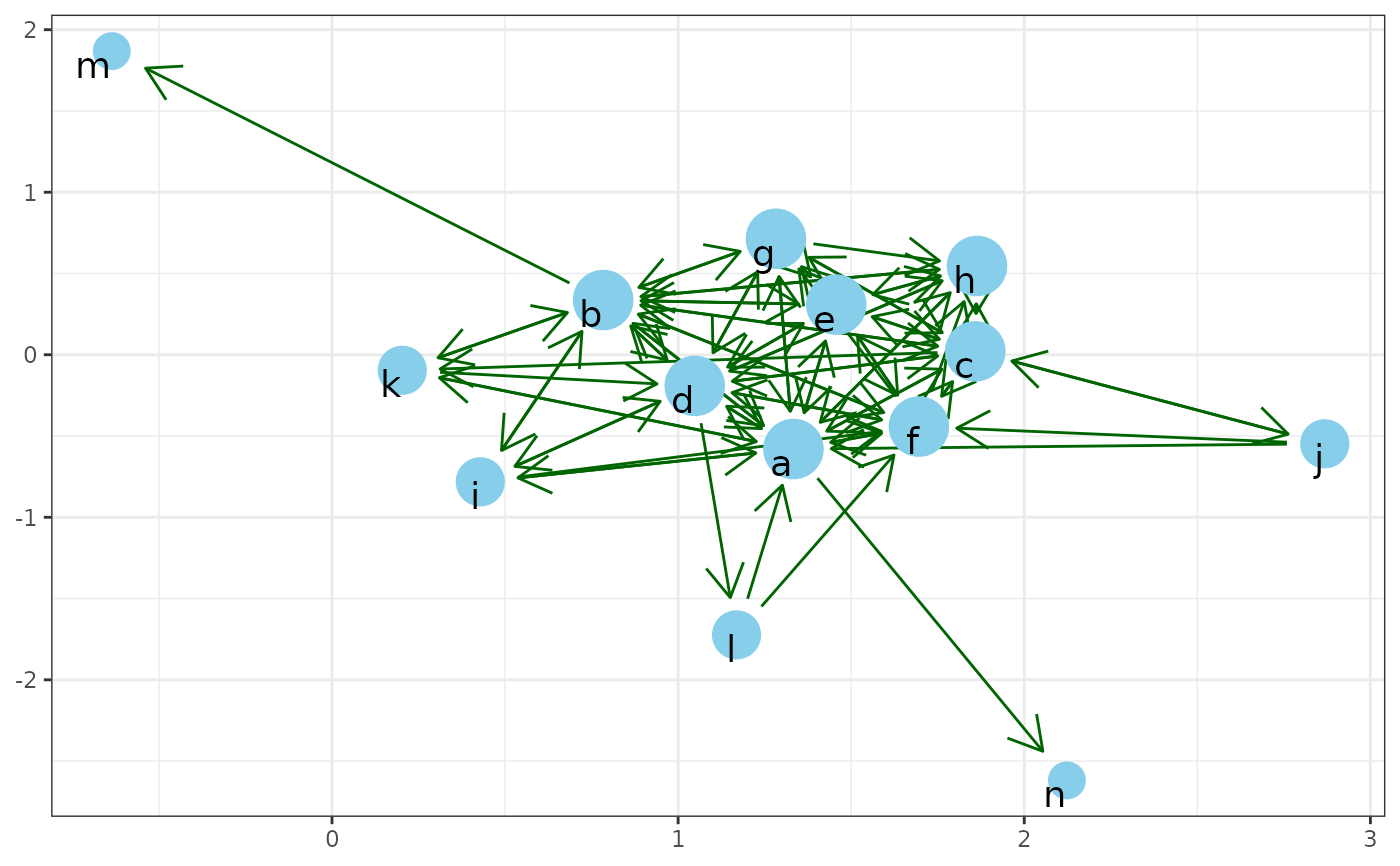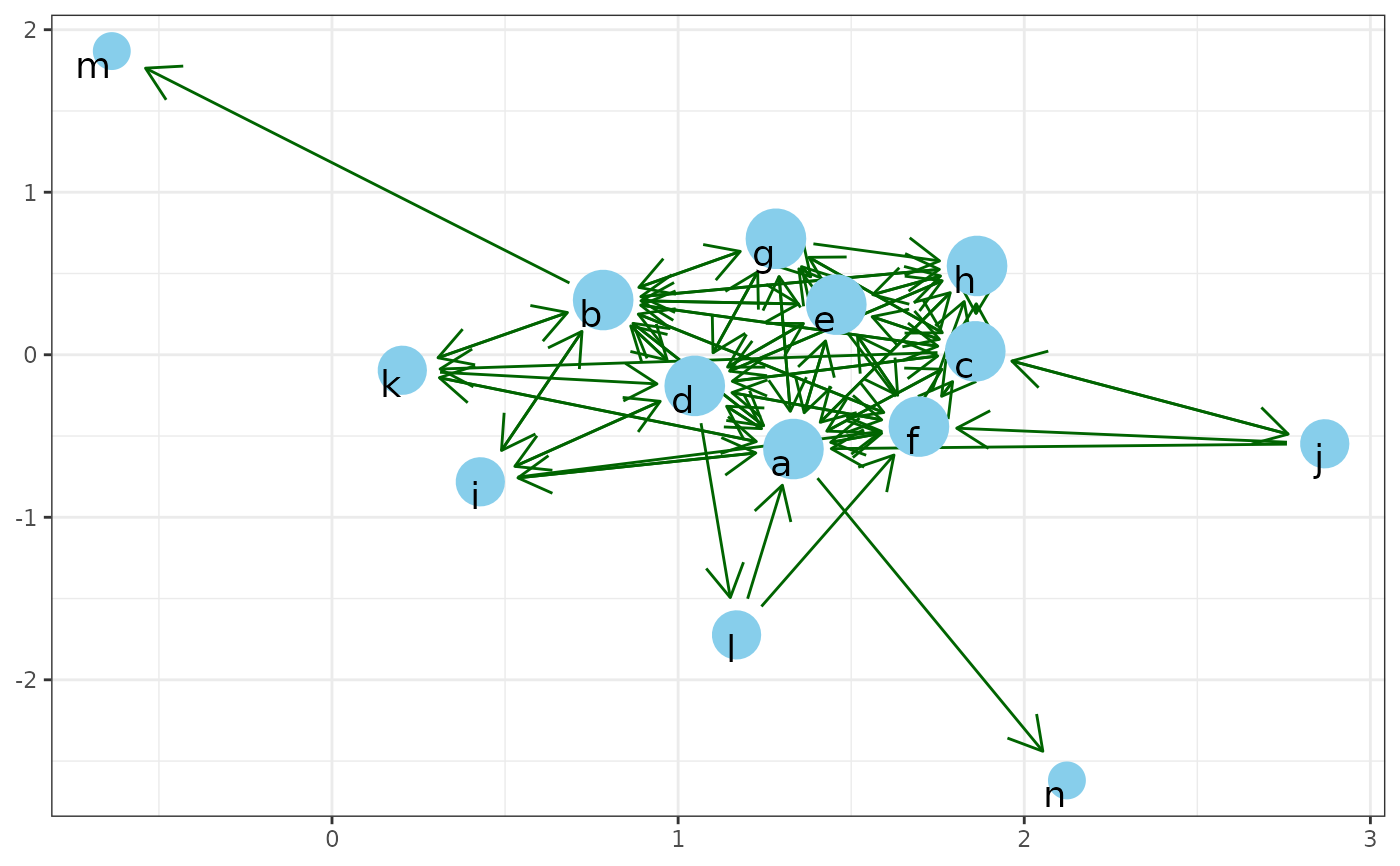Draw bigram network using morphological analysis data.
Usage
draw_bigram_network(df, draw = TRUE, ...)
bigram(df, group = "sentence", depend = FALSE, term_depend = NULL, ...)
trigram(df, group = "sentence")
bigram_depend(df, group = "sentence")
bigram_network(bigram, rand_seed = 12, threshold = 100, ...)
word_freq(df, big_net, ...)
bigram_network_plot(
big_net,
freq,
...,
arrow_size = 5,
circle_size = 5,
text_size = 5,
font_family = "",
arrow_col = "darkgreen",
circle_col = "skyblue",
x_limits = NULL,
y_limits = NULL,
no_scale = FALSE
)Arguments
- df
A dataframe including result of morphological analysis.
- draw
A logical.
- ...
Extra arguments to internal functions.
- group
A string to specify sentence.
- depend
A logical.
- term_depend
A string of dependent terms column to use bigram.
- bigram
A result of bigram().
- rand_seed
A numeric.
- threshold
A numeric used as threshold for frequency of bigram.
- big_net
A result of bigram_network().
- freq
A numeric of word frequency in bigram_network. Can be got using word_freq().
- arrow_size, circle_size, text_size,
A numeric.
- font_family
A string.
- arrow_col, circle_col
A string to specify arrow and circle color in bigram network.
- x_limits, y_limits
A Pair of numeric to specify range.
- no_scale
A logical. FALSE: Not draw x and y axis.
Value
A list including df (input), bigram, freq (frequency) and gg (ggplot2 object of bigram network plot).
Examples
sentences <- 50
len <- 30
n <- sentences * len
x <- letters
prob <- (length(x):1) ^ 3
df <-
tibble::tibble(
lemma = sample(x = x, size = n, replace = TRUE, prob = prob),
sentence = rep(seq(sentences), each = len))
draw_bigram_network(df)
 #> $df
#> # A tibble: 1,500 × 2
#> lemma sentence
#> <chr> <int>
#> 1 a 1
#> 2 c 1
#> 3 d 1
#> 4 b 1
#> 5 d 1
#> 6 a 1
#> 7 d 1
#> 8 q 1
#> 9 c 1
#> 10 g 1
#> # ℹ 1,490 more rows
#>
#> $bigram
#> # A tibble: 264 × 3
#> word_1 word_2 freq
#> <chr> <chr> <int>
#> 1 b a 24
#> 2 b g 21
#> 3 a b 20
#> 4 a c 20
#> 5 e b 20
#> 6 b d 19
#> 7 d b 19
#> 8 b c 17
#> 9 c b 17
#> 10 a e 16
#> # ℹ 254 more rows
#>
#> $freq
#> [1] 10 10 10 10 10 10 10 10 8 8 8 8 6 6 6
#>
#> $gg
#> $df
#> # A tibble: 1,500 × 2
#> lemma sentence
#> <chr> <int>
#> 1 a 1
#> 2 c 1
#> 3 d 1
#> 4 b 1
#> 5 d 1
#> 6 a 1
#> 7 d 1
#> 8 q 1
#> 9 c 1
#> 10 g 1
#> # ℹ 1,490 more rows
#>
#> $bigram
#> # A tibble: 264 × 3
#> word_1 word_2 freq
#> <chr> <chr> <int>
#> 1 b a 24
#> 2 b g 21
#> 3 a b 20
#> 4 a c 20
#> 5 e b 20
#> 6 b d 19
#> 7 d b 19
#> 8 b c 17
#> 9 c b 17
#> 10 a e 16
#> # ℹ 254 more rows
#>
#> $freq
#> [1] 10 10 10 10 10 10 10 10 8 8 8 8 6 6 6
#>
#> $gg
 #>
#>